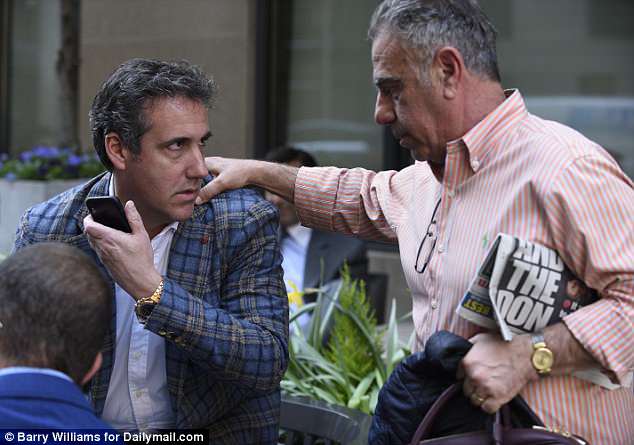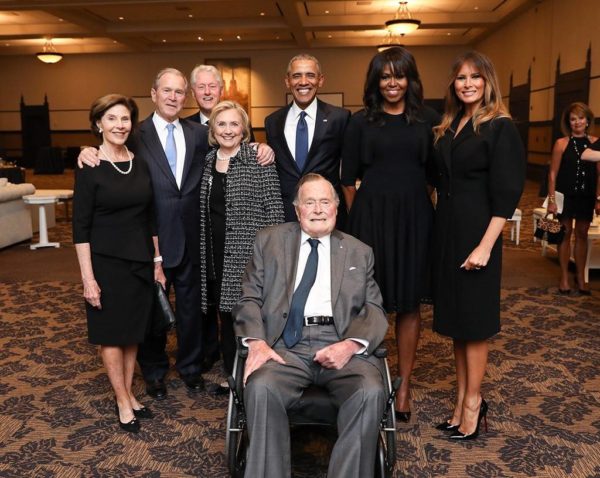Notes
With Media Fixated on the Terror, a Good Time to Look Again at Everyday Middle East
Alongside coverage of the latest Trump scandal, news reporting earlier in April featured scenes of Israeli soldiers indiscriminately shooting Gazan teenagers taking part in non-violent protests at the barrier wall. This coverage, though, was rapidly eclipsed by pictures of wounded and dead civilians from the latest chemical attack by the Syrian government. Weeks of relentless Western coverage of violence in the Middle East then was followed by news, and still more dramatic and militaristic images, of an allied bombing attack against the Assad regime.
While keeping the Gaza and Syria violence in view, we insist on the urgency of a different type of image: this photo of two teenage girls sitting back-to-back inside a car. The framing crops off the outside world, while adults in the front seat are barely visible – just the tops of their heads and a blurry, inquisitive-looking face in the rearview mirror. The girl on the left uses her hand as a pillow, her eyes slightly downcast and her mouth gently upturned as if she is turning over a delicious adolescent secret. The other girl seems more attuned to whatever is happening beyond our view; she sits upright with the faintest hint of a smile, her eyes watchful and curious. In one hand she holds a small bunch of coral-colored flowers. Their headscarves dazzle the eye: one a grid-dyed ombre lilac, the other a pristine, almost luminescent ivory embellished with rhinestones.
The scene is undeniably sweet, evocative of adolescent pleasures and the freedom of auto-mobility. Road trips promise shared friendship, new adventures and the escape from the everyday. At the same time, the caption jarringly situates the girls in Gaza, a place more familiar to western viewers as a militarized space of crisis and violence.
Who, one wonders, takes a road trip in the middle of an occupation zone?
As a tightly-focused interior shot, the photo provides no geographical or political context. Tanya Habjouqa’s composition instead brings the viewer into the intimate space of an everyday family outing. At a time when Gaza is facing a human rights catastrophe, which a UN report recently predicted will be uninhabitable by 2020, picturing these girls on a road trip can distract viewers from attending to Israel’s territorial demarcation of Gaza as a place of social death. At risk of understating the daily political, economic and cultural violence of occupation, Habjouqa’s framing instead confronts, and rebuffs, a gaze that demands to see misery.
We imagine that the travelers on this road trip will encounter the intrusion of a checkpoint, the Israeli security apparatus, or the consequences of Gaza’s current unraveling. And yet, the photo asks us both to see Gazans differently AND to confront our own visual desire for more evidence of suffering. As spectators in times of disaster, it can be tempting to trained our eyes on the very worst news, and yes, this kind of attention is important and necessary. Photos like Habjouqa’s, however, remind us that there is more to see. More importantly, it underscores the problems in such a focus.
Habjouqa’s photo is just one from the broad digital archive, Everyday Middle East. The site was featured recently in a CNN story lauding the attempt to “challenge stereotypes of the region.” Shot by a range of photographers, the images vary in their style and focus but all emphasize scenes of daily life. The usual markers Western photojournalism relies upon to represent the region and its inhabitants are largely missing. In some cases, in fact, the photographs seem to deliberately reclaim signs, objects and places of violence back into spaces of and for the living. In the case of the road trip photo, for example, the cozy interior of a family car replaces the specter of the car-bombing, insistently visualizing the Middle East as a place where other things are possible.
Against the Orientalism that typically structures media representations, pictures of the everyday refute Western desires to look at the exotic, the desperate, the dangerous. As opposed to historical Western representations of Arabs as the alien Other, scenes of working, shopping, dancing, or laughing reclaim the Middle East as a region populated by people who assert their right “to be.”
Consumption emerges as a key motif in many of these images. Purchasing, preparing, sharing, and enjoying food serve here as humanizing and universalizing acts. Beyond functioning to make the people in the photos seem regular and relatable, they also visualize the Middle East as a place where life is valued, nurtured, and sustained rather than taken, ended, or degraded.
For Western audiences, the observance of “Ramadan” has arguably become shorthand for the excess or inscrutability of Islam. When it appears in news stories about the Middle East, it is often in the context of war making, either a lull in fighting (usually against U.S. or Western militaries) or an intensification of it. Observances like the hajj are exceptionally photogenic, but Ramadan, as an inward expression of faith, is hard to visualize. Instead of representing it as an expression of piety or submission, the extended fast often appears as something retrograde, suspect, or even nefarious.
The photojournalistic fascination with animal sacrifice for Eid Al-Adha, observed during the hajj, also makes Muslim consumption seem exotic or brutish. In comparison, consider this barefoot older man eating an ice cream cone (the vanilla soft serve matching the immaculate white of his garments). As with other photographs in this archive, dynamic composition, framing, lighting, and intense color captures the feel, touch, sound and taste of a sensual world. Sharing this moment (as viewers, we can almost taste the ice cream) refutes Western assumptions about Islamic enjoyment as fanatical or mystifying.
Along similar lines, this photo by Tasneem Alsultan reworks the symbol of the niqab-wearing woman. Instead of a more conventional scene of threat or constraint, here, the women anchor a scene that is light-hearted and joyful.
These women, selling high-end cosmetics at LUSH, have just learned they will soon have the right to drive. Exuberant in their monochromatic and enveloping garments, they are a clear visual alternative to stereotypical representations in Western media. Surrounded by soaps and lotions and pink-wrapped packages, the photo places these women inside a more familiar terrain of femininity. Their enthusiasm for the opportunity to drive both modernizes them and underscores their similarity to women in the West. The playful advertising —love is in the hair—hints at an intimacy that takes place invisibly beyond the frame (even if it might also appeal to the long-standing Western fascination with seeing beneath the veils of Muslim women). Snapping fingers and moving torsos, the women’s physical expressiveness entices us into an emotional space that links their exuberance to modern gender politics.
These photos, and the larger project of Everyday Middle East, do vitally important work, particularly in a moment of heightened Islamophobia. Alongside the familiar deluge of photos showcasing suffering, precariousness, and destruction, these images remind us of the myriad ways in which people maneuver through political conflicts. Everyday Middle East provides a visual counterpoint to the litany of photos of violence, death, and misery that constitute the majority of Western reporting.
In the face of escalating violence, spectators can readily slip back into Orientalist thinking that ignores the very people living, dying, surviving (and in some cases, flourishing) in the region. The appeal of this imagery—be it quirky, funny or poignant—is similar to any street photography which bestows meaning on the everyday. Put another way, these representations of life in the Middle East are no less real than their more graphic or disturbing counterparts.
There is a risk, though, in this visual politics of sameness, of universality, for it can also make it too easy to look away. In the global media environment, viewers do pay attention (if briefly) to the latest chemical weapons attack or suicide bombing. Rarely, however, is there sustained interest in the everyday conditions that shape and sustain people’s lives.
The conundrum in these everyday pictures is that the people in them have otherwise only been understood by the West as exotic or different. Put another way: these pictures are only newsworthy (to a CNN, for example) because of the way they challenge the kind of objectifying and stereotyping that has typically denied people of the Middle East their humanity.
This tradition, dominant since early colonial exploration, entraps projects like Everyday Middle East into a division of human and “other.” Rather than a criticism of the photographers, what these photos really expose is how any claim that Middle Easterners are just people necessarily concedes that their humanity needs to be asserted, proven, and verified, rather than assumed or taken for granted.
— Rebecca A. Adelman and Wendy Kozol
Photo: Tanya Habjouqa/Everyday Middle East Caption: Teen girls and flowers on a Gaza road trip, October 13, 2017 ; Photo 2 & 3: Tasneem Alsultan/Everyday Middle East. Caption 2: At Softy ice cream shop, June 13, 2017; Caption 3: Saudi saleswomen dance after hearing the news of women being able to drive in June of next year. They played songs with lyrics including driving, starting from Celine Dions “I drove all night”, November 21, 2017.


Reactions
Comments Powered by Disqus